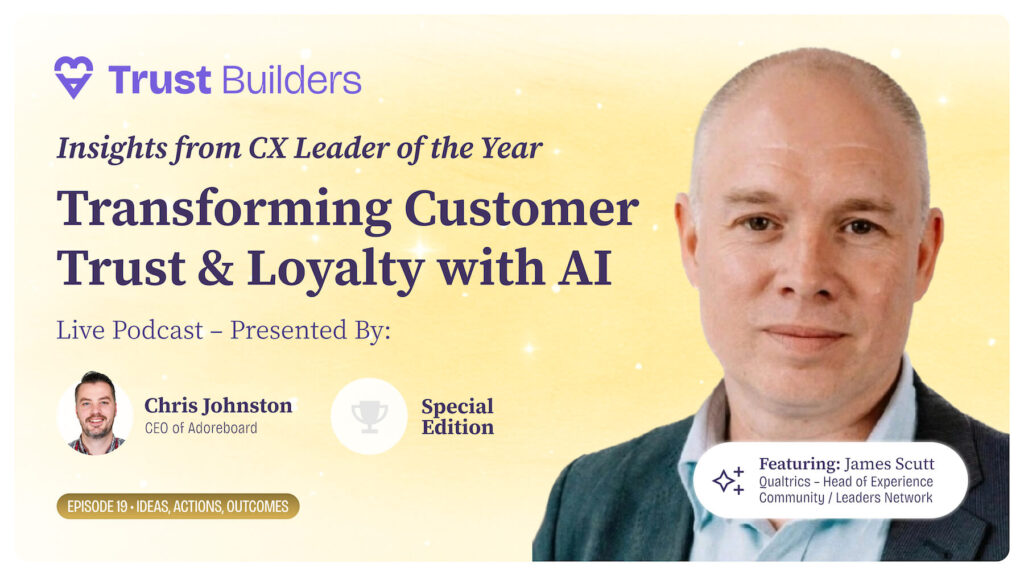In recent years, the retail industry has experienced a significant shake-up. With the emergence of big-brand online retailers, brick-and-mortar shops are in stiff competition with these digital giants. We recently hosted a webinar with Intermarketing Agency’s Director of CRM and Data, Gianfranco Cuzziol, wherein we discussed customer experience in the age of Amazon. If you happened to miss our live broadcast of the webinar, you can access the recorded version here. Or if you’re just looking for a few key takeaways, keep on reading.
The rise of digitally-influenced shopping, and its resulting impact on consumer expectations, has changed the game and raised the bar for brands looking to gain market share in an increasingly competitive space. Research has shown that what customers really value is ‘the experience’. 86% of shoppers will pay more for a better customer experience. Yet only 1% of customers feel that brands and businesses consistently meet their expectations (Source: Forbes).
We live in a time where retailers must realise that customers are in control, but they’re a very complex mix of ad avoiders and brand advocates. It is not impossible to imagine that, by 2020, customer experience will take over price and product as the key brand differentiator (Source: Walker). So how can retailers keep up with, and capitalise on, today’s retail revolution? How can they meet and exceed their customers’ expectations?

We’ve identified four key trends that are shaping the future of retail:
1: The Hyper Relevant Retailer
The modern customer is hyper-connected, hyper-empowered and wants hyper-convenience. Brands must deliver what customers desire: value, efficiency and engagement, both online and offline. The rise of online reviews, and individuals having the ability to interact with brands and retailers on social sites, has given customers the power to compare prices and get the best deal out there.
Customers want to buy at the greatest possible convenience and lowest possible price. In addition to this is the emergence of the ‘experience economy’; customers increasingly prioritise experiences, and seek memorable interactions that engage them in a rewarding way.
2: Bricks .vs. Clicks
The Importance of the ‘omni-channel’. It’s important to note here that its not necessarily Bricks or Clicks. Even retailers who started online often end up with brick versions of their marketplace. 78% of customers like shops that start online and then develop into physical stores (Source: Retail Dive). Digital and in-store experience are seen less and less as mutually exclusive experiences. Often they complement each other.
Omni-channel shopping is the new norm. Blurring the lines between online and in-store; brands are successfully linking on and offline behaviour to create a seamless customer experience, which should be the ultimate ambition for brands.
3: Tech is Transforming the Retail Journey
Technology is transforming our daily lives and customers are now far more empowered to seek out product information. In short, customers want the future. Now. Technology is disrupting the customer journey and improving the buying experience in an exciting way.
By 2020, 40% of all commerce transactions will be enabled by cognitive/AI personal shoppers and conversational commerce (Source: IDC). The merging of the physical and digital worlds is truly irresistible in today’s retail landscape. Brands must exploit all forms of digital disruption for their benefit. They must focus on the experience and position technology as the path to get there.
4: The Right Metrics
Achieving a true customer-centric experience requires metrics that track customer behaviour in a way that is credible (can be trusted to base decisions on), reliable (can be applied across customer journey life cycles and multiple touch points), accurate (representative of the entire customer base), precise (specific enough to provide insight and make business decisions) and actionable (provides an insight into what can be done to encourage customers to return).
Data is everywhere. Customers are constantly creating insights online with every purchase or interaction. According to Harvard Business Review, by 2020 it’s estimated that we’ll produce 44 zettabytes every day. That’s equal to 44 trillion gigabytes. Data should always be about creating value for the customer. Learn from them to create a better experience for them.

In a world where customers have fundamentally rewritten the retail rules, modern day shoppers have the power to buy anywhere, anytime, on any device. Now more than ever, relationships must be built on the customer’s terms. Here are 3 key takeaways that we think are practical steps for any retailer to take in rethinking the customer experience:
1. Optimise Customer Emotion
Insight shows the opportunity to focus emotional responses as a way to differentiate means focusing on what matters to them most, and the target emotions you want to create.
2. Captivate Customers
Increasingly, customers want to be entertained and inspired. So brands need to align with the new emotional needs of customers moving from transactional environments to retail theatres. Whilst physical stores provide a natural environment to create an immersive experience, blending this with digital experiences can continue the positive experience at a different or later stage of the customer journey.
3. Reduce Customer Effort
Insight shows that customers want to reduce the effort of their customer journey – the time it takes to return an item or to speak to someone about customer service. Brands that reduce customer effort will win.
Regardless of the headlines, retail is not dead. In fact, here lies the punchline: the physical store could be the most powerful and measurable media channel available to a brand. It acts as the hub of customer experiences. In-store remains an important channel for acquiring new customers; they serve as showrooms that drive customers online, whilst also working as fulfilment points for e-commerce operations.
From online to real-world interactions, all experiences need to be seamless and cohesive. Successful customer experience is about finding what’s valuable for the customer, and putting forward strategies that put their evolving needs at the heart of the decision-making process.
Book in for a demo today if you would like to learn more about how Adoreboard can help you or your company gain deeper insights.
Want to find out more about CX in the Age of Amazon? Access the webinar recording here.







